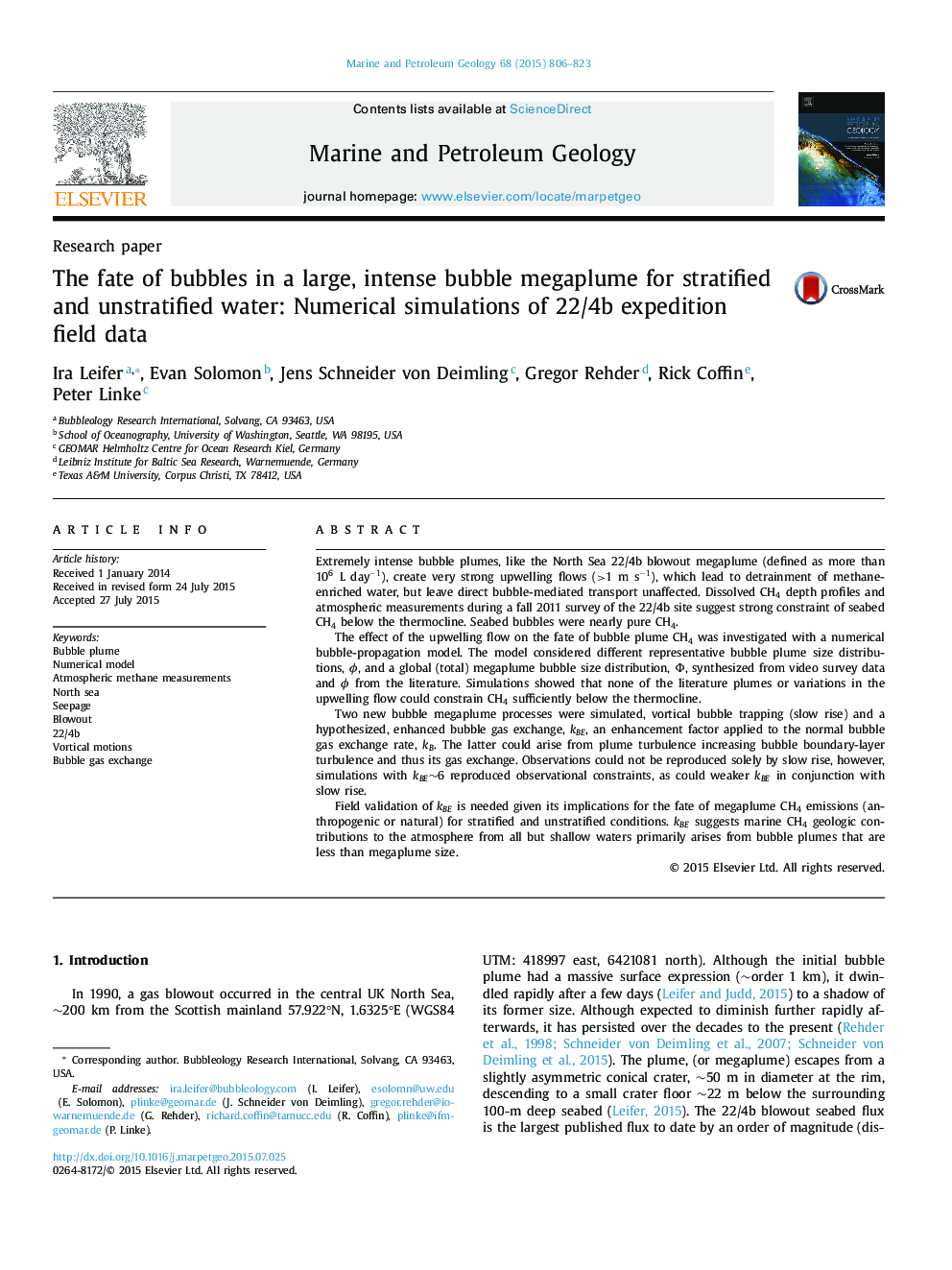| کد مقاله | کد نشریه | سال انتشار | مقاله انگلیسی | نسخه تمام متن |
|---|---|---|---|---|
| 6434862 | 1351605 | 2015 | 18 صفحه PDF | دانلود رایگان |

- Megaplume CH4 transport is highly constrained for strong stratification and currents.
- Hypothesized, enhanced bubble dissolution could explain CH4 profile data.
- Hypothesized, slow bubble rise plus enhanced bubble dissolution can explain CH4 data.
- Smaller, bubble plume CH4 transport maybe more efficient than for megaplumes.
Extremely intense bubble plumes, like the North Sea 22/4b blowout megaplume (defined as more than 106 L dayâ1), create very strong upwelling flows (>1 m sâ1), which lead to detrainment of methane-enriched water, but leave direct bubble-mediated transport unaffected. Dissolved CH4 depth profiles and atmospheric measurements during a fall 2011 survey of the 22/4b site suggest strong constraint of seabed CH4 below the thermocline. Seabed bubbles were nearly pure CH4.The effect of the upwelling flow on the fate of bubble plume CH4 was investigated with a numerical bubble-propagation model. The model considered different representative bubble plume size distributions, Ï, and a global (total) megaplume bubble size distribution, Φ, synthesized from video survey data and Ï from the literature. Simulations showed that none of the literature plumes or variations in the upwelling flow could constrain CH4 sufficiently below the thermocline.Two new bubble megaplume processes were simulated, vortical bubble trapping (slow rise) and a hypothesized, enhanced bubble gas exchange, kBE, an enhancement factor applied to the normal bubble gas exchange rate, kB. The latter could arise from plume turbulence increasing bubble boundary-layer turbulence and thus its gas exchange. Observations could not be reproduced solely by slow rise, however, simulations with kBEâ¼6 reproduced observational constraints, as could weaker kBE in conjunction with slow rise.Field validation of kBE is needed given its implications for the fate of megaplume CH4 emissions (anthropogenic or natural) for stratified and unstratified conditions. kBE suggests marine CH4 geologic contributions to the atmosphere from all but shallow waters primarily arises from bubble plumes that are less than megaplume size.
Journal: Marine and Petroleum Geology - Volume 68, Part B, December 2015, Pages 806-823